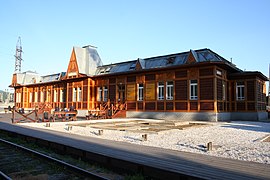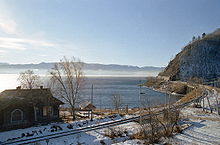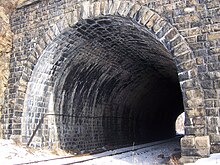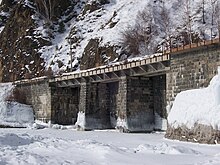Baikal Railway
| Baikal Railway | |||||||||||||||||||||||||||||||||||||||||||||||||||||||||||||||||||||||||||||||||||||||||||||||||
|---|---|---|---|---|---|---|---|---|---|---|---|---|---|---|---|---|---|---|---|---|---|---|---|---|---|---|---|---|---|---|---|---|---|---|---|---|---|---|---|---|---|---|---|---|---|---|---|---|---|---|---|---|---|---|---|---|---|---|---|---|---|---|---|---|---|---|---|---|---|---|---|---|---|---|---|---|---|---|---|---|---|---|---|---|---|---|---|---|---|---|---|---|---|---|---|---|---|
|
Baikal Railway Station
| |||||||||||||||||||||||||||||||||||||||||||||||||||||||||||||||||||||||||||||||||||||||||||||||||
| Route length: | 89 km | ||||||||||||||||||||||||||||||||||||||||||||||||||||||||||||||||||||||||||||||||||||||||||||||||
| Gauge : | 1520 mm ( Russian gauge ) | ||||||||||||||||||||||||||||||||||||||||||||||||||||||||||||||||||||||||||||||||||||||||||||||||
| Top speed: | 20 km / h | ||||||||||||||||||||||||||||||||||||||||||||||||||||||||||||||||||||||||||||||||||||||||||||||||
|
|||||||||||||||||||||||||||||||||||||||||||||||||||||||||||||||||||||||||||||||||||||||||||||||||
As Baikal Railway or Baikal Circular Railway ( Russian Кругобайкальская железная дорога ) is the 89 km long, today single-track railway line Slyudjanka - Baikal in Russia , which runs along the southwestern bank of Lake Baikal .
history
The Baikal Railway was built between 1902 and 1904 as part of the Trans-Siberian Railway . The first train ran on September 30, 1904. After completion, it replaced the ferry service that connected the Central Siberian railway with the eastern shore of Lake Baikal. Therefore, as well as due to the high cost, it is also known as the "gold buckle of the Russian steel belt".
Numerous tunnels through rocks and bridges over rivers and streams had to be built, which is why the cost was five times the cost of other lines of the Trans-Siberian Railway. The greatest sights today include 39 tunnels with a total length of 7 km.
Todays use
Since the construction of the Irkutsk reservoir in 1951 and its closure as a section of the Trans-Siberian Railway with its new construction between Irkutsk and Baikal, this railway line is only a branch line. Today a single local train runs daily, supplying the neighboring towns with everyday goods. On weekends and on selected days, a tourist train runs with photo stops at selected points. Since the route is no longer of great importance, the maximum speed has now been set at 20 km / h.
Efforts are currently being made to include the route on the World Heritage List.
Individual evidence
- ^ Hans Engberding, Bodo Thöns, Transsib-Handbuch
- ↑ www.gotranssib: "Transsib"
literature
- Hans Engberding, Bodo Thöns: Transsib manual . On the way with the Trans-Siberian Railway. Trescher, ISBN 3-89794-037-X .






